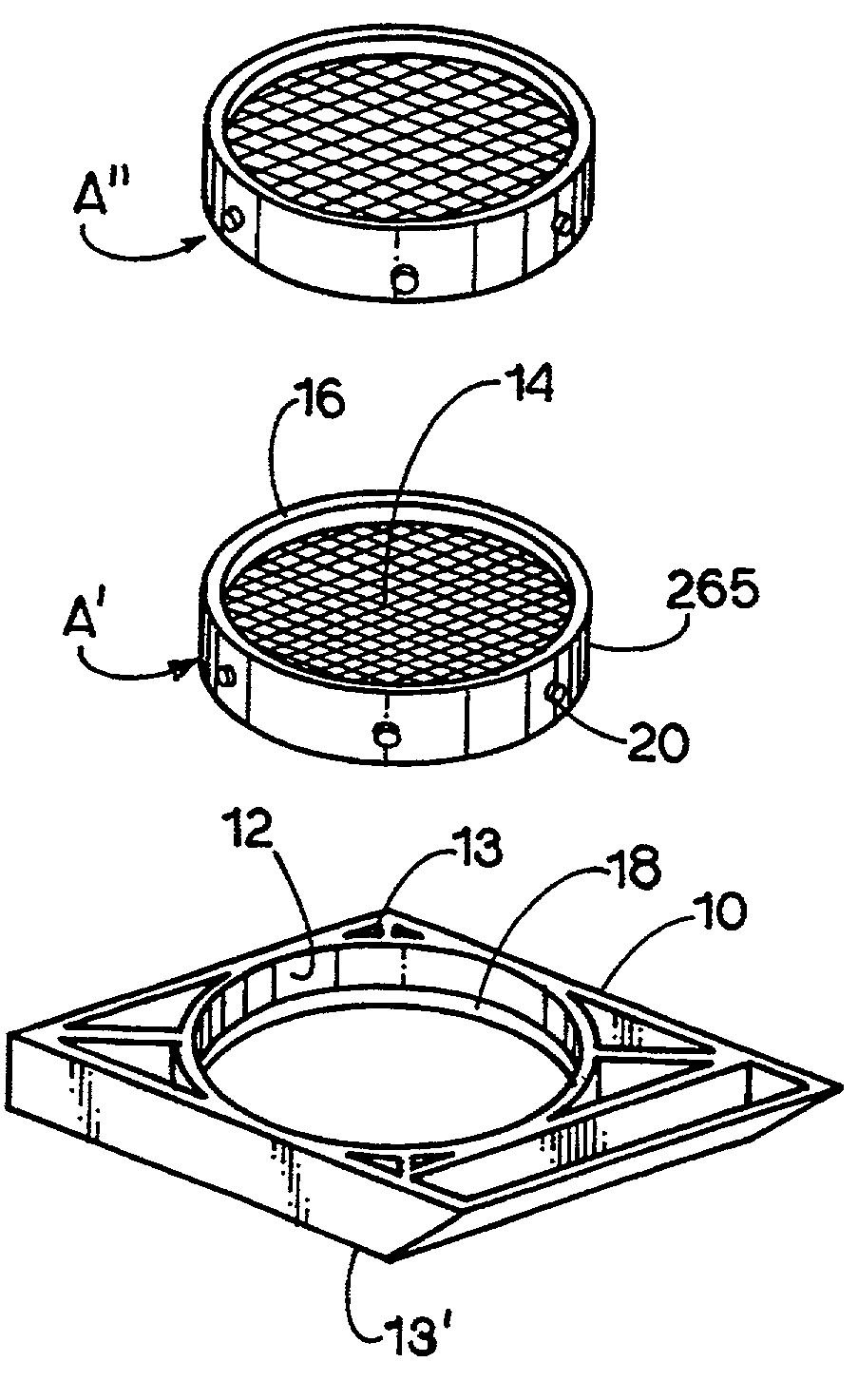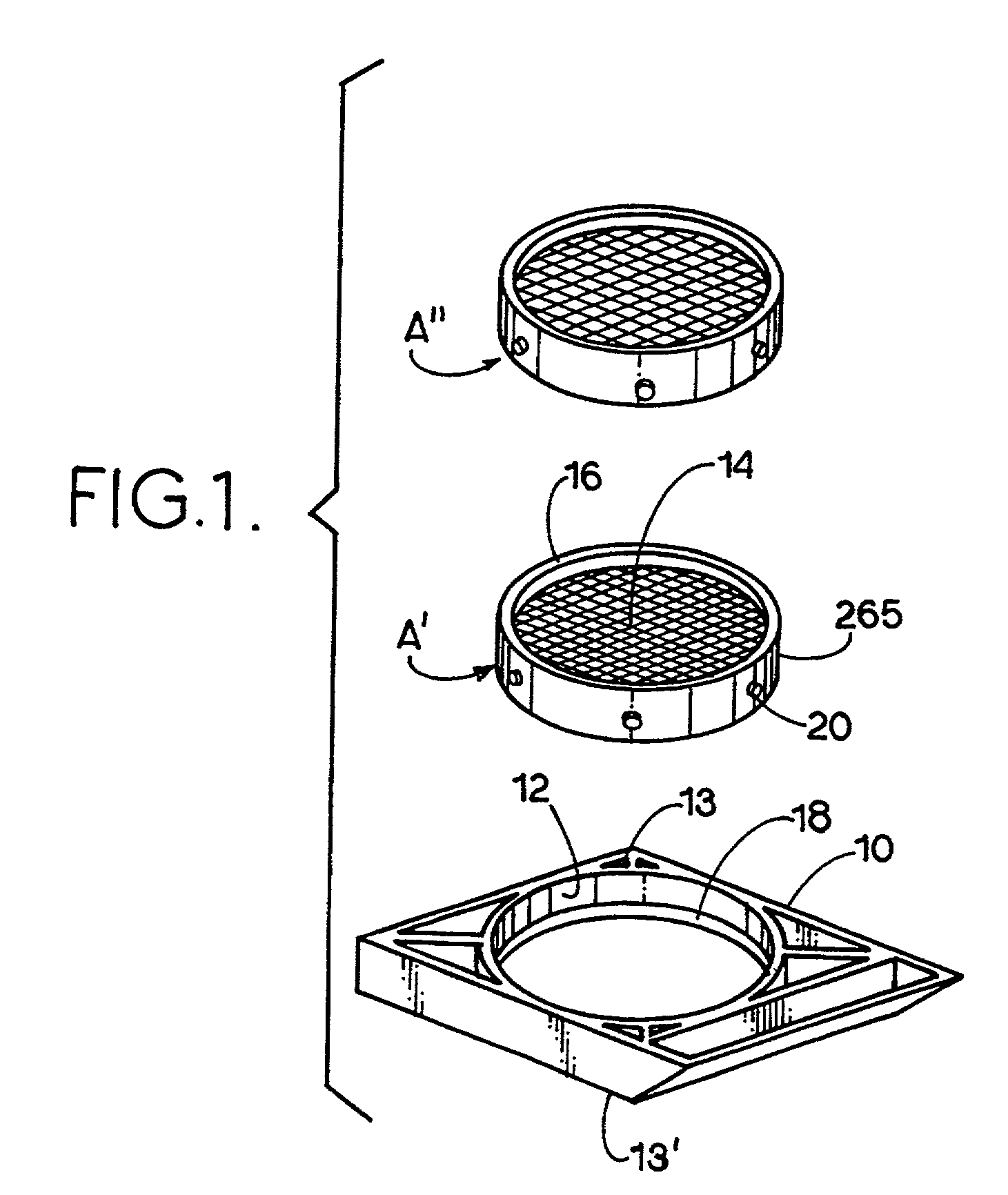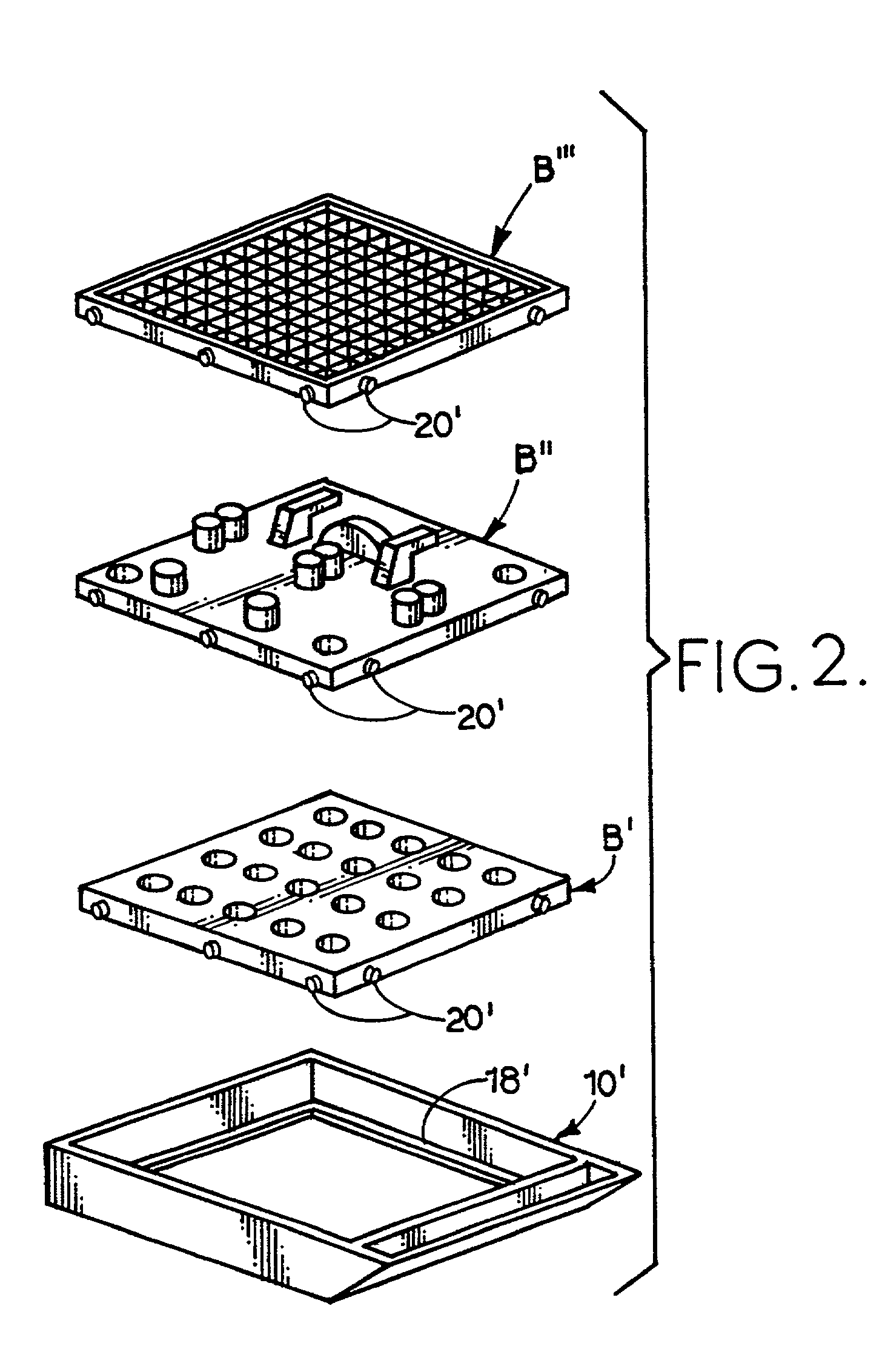Apparatus and method for harvesting and handling tissue samples for biopsy analysis
a tissue biopsy and apparatus technology, applied in the field of tissue biopsy analysis, can solve the problems of difficult retrieval and processing, small sample size, and inability to determine the cell type of the tumor by a pathologis
- Summary
- Abstract
- Description
- Claims
- Application Information
AI Technical Summary
Benefits of technology
Problems solved by technology
Method used
Image
Examples
Embodiment Construction
[0173]Tissue Trapping Platforms
[0174]A platform includes a filter or stage assembled in a filter cassette frame or a stage cassette frame. FIGS. 1 and 2 show platform assemblies with interchangeable microtome sectionable tissue trapping filters, sectionable immobilizing stages or non-sectionable immobilizing stages and cassette frames.
[0175]Microtome Sectionable Tissue Support
[0176]FIG. 1 shows a cassette frame 10 with a cylindrical interior frame 12 which is designed to accept microtome sectionable tissue support, such as filters A′ and A″ each of which can be porous and forms a tissue support 14 surrounded by a collar 16. As discussed above, the term “filter” will be used for the tissue support because, in one form of the tissue support, fluid can pass through the tissue support while tissue samples are retained on the support in the manner of a filter. Tissue support 14 supports tissue samples during tissue processing, embedding and microtomy and can include sectionable filters w...
PUM
| Property | Measurement | Unit |
|---|---|---|
| thick | aaaaa | aaaaa |
| pore sizes | aaaaa | aaaaa |
| pore sizes | aaaaa | aaaaa |
Abstract
Description
Claims
Application Information
 Login to View More
Login to View More - R&D
- Intellectual Property
- Life Sciences
- Materials
- Tech Scout
- Unparalleled Data Quality
- Higher Quality Content
- 60% Fewer Hallucinations
Browse by: Latest US Patents, China's latest patents, Technical Efficacy Thesaurus, Application Domain, Technology Topic, Popular Technical Reports.
© 2025 PatSnap. All rights reserved.Legal|Privacy policy|Modern Slavery Act Transparency Statement|Sitemap|About US| Contact US: help@patsnap.com



